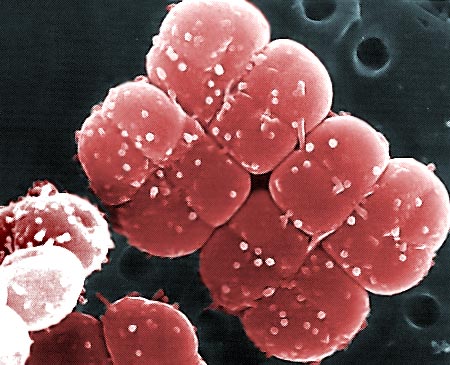
As someone who believes in the value of the scientific outlook, it's easy to be discouraged by the way information is often disseminated through the media. So this same week the National Post struggled with Journalism 101 in getting their scientific quotes straight on global warming, it was refreshing to read
a recent Globe and Mail article (click on the first google hit or read below) by none other than former right-wing Reform party leader Preston Manning. In it he makes a convincing argument for the place of science in Canadian society and in particular the critical role it can play in developing a sustainable economy for the future:
Mr. Prime Minister, you've got mail
PRESTON MANNING
From Monday's Globe and Mail
Suppose Stephen Harper were to ask the heads of the federal government's various scientific research agencies how they might contribute to an objective of improving and conserving Canada's physical environment. Here's a sample of the responses he might receive. From the Natural Sciences and Engineering Research Council (the largest funding source in Canada for university research and training in environmental science, technology, and innovation):
Mr. Prime Minister, we can offer improved measurement of CO2 emissions and the development of CO2 sequestering techniques for industry; the CarbonSaver approach to sustainable energy production; improved techniques for monitoring ocean health and water treatment; improvements to hazardous waste disposal systems; the development of sustainable management technologies for peat bogs, forestry, and agriculture, and the list goes on... From the National Research Council (the government's senior research and development institution comprising more than 20 institutes and national programs):
We can provide advances in emissions control and fuel reduction, alternate energy sources (such as gas hydrates, fuel cells, ocean energy, and biomass conversion), bio processes and products such as “greener” plastics and better batteries – all developed in such a way as to encourage industrial clusters capable of transferring such research and technologies to the marketplace.From the Canada Foundation for Innovation (which has funded 500 environmental projects worth more than $200-million):
We are engaged in work of the polar laboratory on Ellesmere Island and the Amundsen research icebreaker both of which are relevant to Arctic conservation; we are learning from oil sands pilot plants about more efficient and environmentally friendly approaches to energy production; we have “green building” projects and improved approaches to marine life conservation flowing from the NEPTUNE project in the northeast Pacific (soon to be the world's largest cable-linked seafloor observatory); and so on... From the Social Sciences and Humanities Research Council:
We are supporting scholars studying the socio-economic impacts of climate change, the ethics and governance of environmental protection, the valuation of ecosystem services, and interdisciplinary approaches to environmental change and risk management, among other things.
From the Canadian Institutes of Health Research:
We offer findings concerning the links between human health and impure water, poor quality air, environmental toxicants, and contaminated foods – all helpful in determining what environmental protection measures would have the most immediate and beneficial impact on the health of Canadians.
As one can imagine, while public policy-makers have only recently embraced the concept of environmental conservation, those who engage in basic science long ago discovered and defined the principles of conservation at their most fundamental level. The Prime Minister's inbox would also no doubt receive responses from scientists at the Sudbury Neutrino Observatory, the Perimeter Institute, the Canadian Light Source, the National Institute of Nano Technology, the TRI-Universities Meson Facility (TRIUMF), and Canada's advanced bio-medical laboratories.
All this research has flowed from the most basic laws of conservation: the conservation of mass, as defined by Antoine Lavoisier in 1785; the conservation of energy, by Julius Robert von Mayer in 1842; of thermodynamics by Rudolf Clausius in 1856, and of mass/energy by Albert Einstein in 1905.
These laws declare that when one takes any substance from nature and extracts energy from it in a form that can be used by mankind (what physicists call “work”), there will invariably be “waste.” The sum of the original energy/mass is equal to the energy extracted plus the residual energy/mass of the waste. To date, science has not discovered a process capable of producing pure useful energy (work) without producing waste; thus whenever we produce any good or service we must always be prepared to acknowledge, and to deal with, the waste.
While governments make enormous efforts to measure the “Gross National Product” and devise public policies to facilitate its increase, they are only now beginning to acknowledge the necessity of making equivalent efforts to determine the “Gross National Waste,” and to devise the public policies and encourage the industrial processes required to reduce it, treat it, and return it safely to nature.
Scientists who seek to understand conservation at its most fundamental level no doubt welcome the current interest in incorporating more recent discoveries – such as those of climate science – into public policy. But they also urge greater incorporation into public policy of those scientific principles and findings that have long been known, but never thoroughly applied. And they remind us that those principles and findings are most often discovered, not in the pursuit of immediate solutions to immediate problems, but in the pursuit of a more fundamental understanding of the universe in which we live.
Almost 50 years ago, the president of the United States, through “requests for proposals” issued by NASA, initiated a process for harnessing the scientific, technological, and entrepreneurial resources of that nation to the national goal of putting a man on the moon.
In the 21st century, should it not be possible for our leaders to initiate a process for harnessing the scientific, technological, and entrepreneurial resources of this nation to the goal of reconnecting 30-million Canadians to the environment of planet Earth?
Preston Manning, a former leader of the Official Opposition, is a senior fellow of the Fraser Institute and president of the Manning Centre for Building Democracy.
Kind of makes you wish he had ended up leading the post-merger Conservative party as Prime Minister instead of the very scary, intellectually challenged, George W. Bush wannabe, Stephen Harper, who seems to think that funding science has no value other than as a tool to make rich pharmaceutical and biotech investors richer.
Thanks Preston, you've made my day and validated my existence as a man of science. (I never take anything seriously until a politician agrees, even myself). On a serious note though, it really is great to see politicians of all persuasions taking an interest in science these days, even if they do sometimes resort to cheap theatrics involving hydraulic lifts to show how high their graphs really go (ie Al Gore,
An Inconvenvient Truth). Hey, you can't argue with an Oscar and an audience of "billions" of viewers.
 This week's quackery is a bit less expensive, and a little less dangerous and it looks like a small purple dildo. The Tesla purple personal oscillator can not only serve as a sex toy but apparently also as an electro-magnetic shield, and an energy source. According to Life technology (TM), this invention comes from exclusive papers from Tesla himself. He must be oscillating in his grave. According to the company "The Tesla Purple Energy Shield™ emits vast quantities of energy, which directly repairs, strengthens and protects the energetic fields of the human mind body and soul". Wow a new energy source you're thinking, finally we can wean ourselves from fossil fuels.
This week's quackery is a bit less expensive, and a little less dangerous and it looks like a small purple dildo. The Tesla purple personal oscillator can not only serve as a sex toy but apparently also as an electro-magnetic shield, and an energy source. According to Life technology (TM), this invention comes from exclusive papers from Tesla himself. He must be oscillating in his grave. According to the company "The Tesla Purple Energy Shield™ emits vast quantities of energy, which directly repairs, strengthens and protects the energetic fields of the human mind body and soul". Wow a new energy source you're thinking, finally we can wean ourselves from fossil fuels.





































 Podcast
Podcast




6 comments:
Post a Comment